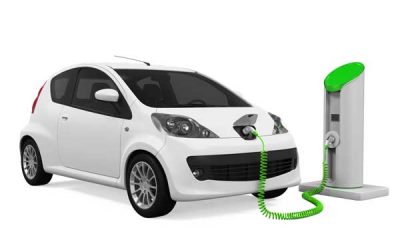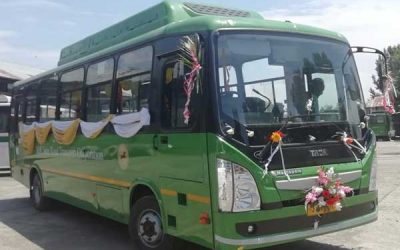In the wake of the work-from-anywhere scenario, cloud-based Team management software platforms are witnessing a substantial uptake. Industry onlookers expect this market to see an average of 25% y-o-y growth for the next three years.
The collaboration and productive project management tools enable businesses and professionals to leverage the power of the cloud to deliver the day to day business tasks virtually from the workplace of their choice. These solutions allow organizational teams to create documents, spreadsheets, and presentations in the cloud and collaborate online through chat, video conferencing, and cloud storage to accomplish various day to day tasks.
While Google’s G-suite and Microsoft owned Office 365 are primarily ruling the team management software market, there are many others, such as Zoho workplace, IBM, and Hancom, eying to make a splash in the productivity suite market.
For the solution providers, the typical market opportunity in this place can be segmented mainly into three categories: individual professionals, small and medium businesses (SMBs), and large enterprises.
The Enterprises and IT leaders have many elements to look at before building a deployment decision. Motivators could include factors such as licensing costs, backup, security, purpose, empowering the mobile workforce, or ease of use.
To help you decide the best fit solution for your organization, Better World provides a quick online project management tools comparison of the cloud-based productivity solution offerings of three top players: Microsoft, Google, and Zoho.
Microsoft 365: For team management
Microsoft 365 (formerly Office 365) is simply the cloud-based variant of the Microsoft Office application suite. It includes email, document creation/editing, contacts, calendars, IM, online meetings, video chats, and web interface.
Many large enterprises prefer Microsoft’s 365 because of its well-established presence in both desktop and online productivity suite arena. Moreover, Microsoft’s consistent focus on industry-centered innovations, flexible buying options, and full integration capability with Windows always help the company get brownie points from its loyal users.
Microsoft also offers Team, a collaboration platform that enables enterprise users to share documents, conduct online meetings, and collaborate in real-time.
Familiarity with Outlook: One of the vital components that operate in favor of Office 365 adoption is the strong brand recall and understanding of Outlook email client amongst corporate workers. Most of the corporate workers are comfortable working with the Outlook email client. And organizations do not desire to produce unnecessary anxiety and disrupt their business continuity by switching to any other productivity partner.
One Drive: MS’s enterprise-grade cloud storage platform, One Drive, offers seamless user experience in terms of hosting documents and files in Online, On-Premises, or Hybrid cloud. Moreover, the enterprise search engine capability also enables users to track and find relevant documents or files at their convenience by inserting appropriate keywords.
Fully integrated with Windows: Additionally, Microsoft’s core resources, i.e., Word processor (MS Word), chart editor (MS Excel), and presentation editor (MS PowerPoint), have always been favored by the traditional computer users. All the online documents are fully integrated with the offline edition of MS Office without any fears related to formatting errors. They also include plenty of pre-built templates for enterprise users.
Many Office apps and services are also available on the pay-as-you-use model. Thus, some companies buy a basic plan and then add different services according to their business need.
Click here to know more details about the various plans offered by Microsoft.
Google’s G-Suite: For office management
Google sticks with a cloud-native and browser-centric approach and has already proved its productivity suite mettle in the consumer space. With G Suite bouquet of offerings, it is right away taking big strides to further beef up its enterprise market share.
Google’s G-Suite includes offerings such as Gmail for business, audio, and video conferencing capability, interactive and shared calendars, spreadsheets, presentations, auditing accounts, log analysis, among others.
Clean interface: The most crucial advantage that the company offers is the clean, simple, and intuitive email interface. Granular controls can be implemented by IT heads of what data or files can be portioned out and what necessitates to be checked. Nevertheless, one of the areas which annoy users is the poor integration of Gmail with Contacts and Calendar apps, something which may be intricate to navigate.
Team Drive: Google’s productivity suite of offerings includes Team Drive, a shared space repository, which allows a specific set of users or teams to search, store, access, and download files and documents from any entitled network device.
On-the-go collaboration: While Google apps (Docs, Sheets, and Slides) may lag behind Microsoft Office (Word, Excel, and PowerPoint) in terms of characteristics and pre-built templates, they outperform MS Office when it comes to the on-the-go collaboration. Google’s robust online ecology and experience enable the company to drive a seamless and smooth document live collaboration experience for its users.
Click here to know more details about the various plans offered by Google.
Zoho Workplace: Cost-effective for SMBs
Hyderabad based global engineering firm, Zoho Corporation, has gathered much interest in recent times. The company offers Zoho Workplace, a single unified cloud office platform that brings together collaboration, productivity, and communications tools and integrates them into other business processes.
Launched in 2005, Zoho’s office suite includes word processing, presentations, spreadsheets, databases, note-taking, and web-conferencing. To compete closely with Google and Microsoft, the company has recently integrated its nine existing productivity tools more firmly than ever.
With over 15 million users in 150 countries, Zoho is still seen as an emerging player in the productivity suite market and not necessarily a threat to the tech behemoths, Google, and Microsoft. Nevertheless, it provides a significant advantage to SMB’s and independent professionals as it is the least expensive amongst all three.
Click here to know more details about the various plans offered by Zoho Workplace.














0 Comments